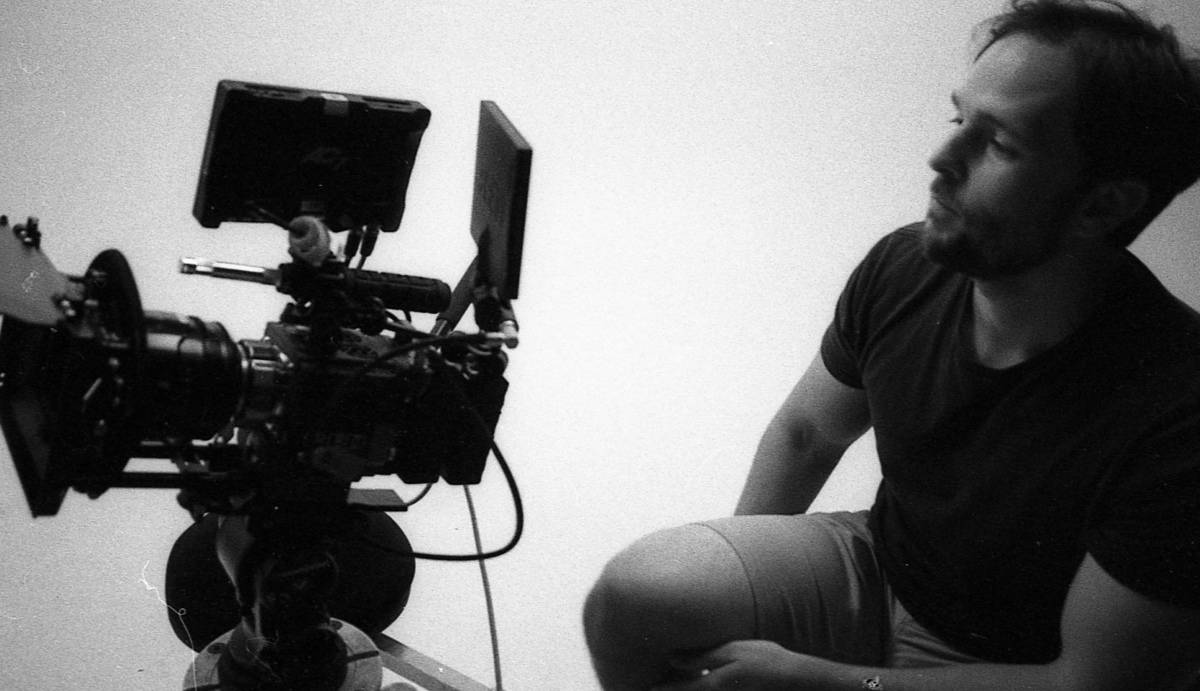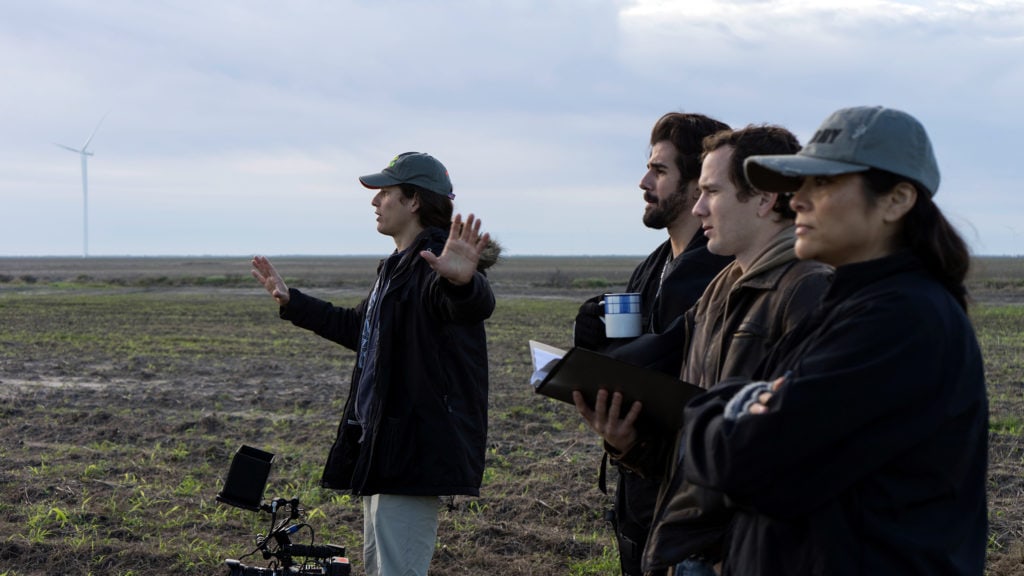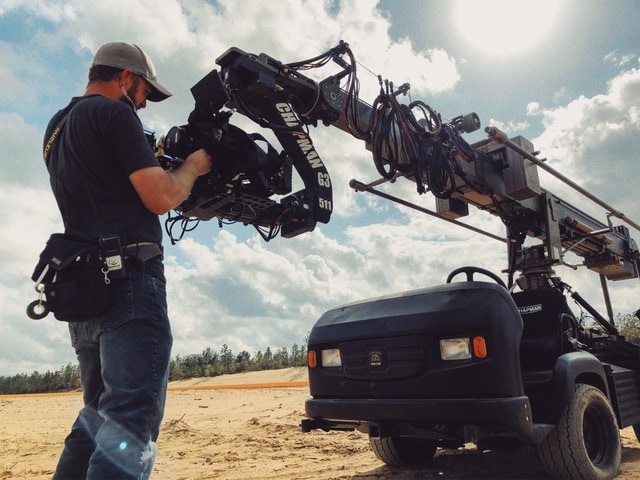
EDITOR’S NOTE: We’re writing a series on the pressures facing the video/film production industry in Austin. Below is Part II of our series. Join the discussion by requesting an invite to our private Facebook group.
Filmmaker David Blue Garcia said what’s on a lot of people’s minds.
“I don’t think Austin is a good city anymore for artists,” he said in May on 3rd & Lamar’s “Cover Charge” podcast.
At UT alum and the director of “Tejano,” which is now streaming on HBO, Garcia says the rising cost of living in Austin is difficult for creatives. It doesn’t help, he says, that production rates have stayed relatively flat, particularly for crew such as grips, gaffers, production assistants (PA) and camera operators. [restrict]
“There are like kind of industry standard rates, and I’ve noticed just in my 10 years as a professional that they haven’t changed that much, even though there’s inflation and things cost more now,” he said. “But the rates are kind of stagnant, you know, and that might actually continue.”
The owner of Austin-based 360 Studios, Andrew Barrera is a cinematographer who cut his teeth as a PA in Orlando working on reality TV series like “Hogan Knows Best.” He says PA day rates have risen by only $50/day in the last seven years. When he began as a PA in 2005, he earned $100/day. Now he’s able to pay PAs $200 per day, but he doesn’t consider that a big increase.
The outlook is worse when you consider the hourly rates. Whether a PA is working 8 hours or 16 hours in a day, the rate is unchanged except for a bit of overtime pay, per Barrera. Either way, it’s hovering around minimum wage for work that is irregular.
For camera operators, a typical day rate is $500.
“When I started back in Austin in 2007, I was (camera) operating for $400, $350 sometimes just to get my foot in the door,” Barrera said. “And that rate has slowly gone up.”
Garcia worked as a camera operator in 2008 and 2009, and he earned $500/day.
“And I get called for that (rate) all the time still, even by some of these companies that should’ve kind of grown beyond that,” he said. “And that seems surprising to me since it’s such a technical job and it takes some knowing.”
For gaffers, who are the head electricians on film crews, the standard day rate is $550-$650, and that’s stayed the same for 10 years, according to Garcia.

Rates Are Under Additional Pressure
The decline in production work due to the economic uncertainty from COVID is exacerbating the rate issue. When clients’ production budgets shrink, slim margins contract further.
Barrera is noticing the market shift downward.
“I’ve already done a bunch of bids for people that are wanting 15 grand for something that is a $50,000 to $80,000 job,” he said. “So we’re not getting them, obviously, because I’m not bidding that low.”
Production rates are typically not discussed or shared openly in right-to-work states like Texas, but people know that when there’s a temptation to work for less, it affects everyone. This is the argument for unions, which have a heavier presence in film hubs like New York City and Los Angeles.
Austin-based director and cinematographer Chad Leathers, whose past clients include Under Armour, Verizon, and Saucony, is sympathetic to what’s going on. He is paying close attention to market movements.
“I do worry that the expectation will be to work for lower rates because the market is depressed,” he said. “But I think for most people, they should stick to what they charge and they shouldn’t work for lower rates if they can avoid it, because it’s just going to hurt everyone in the long run.”
There is a trap in accepting jobs on the cheap. Anna Lani is an accomplished hair and makeup artist who returned to Austin in 2013 after graduating from the Makeup Design for Film and Television program at the Vancouver Film School. Taking lower rates, she’s learned, is often a sign of naivete. People who are unable to scope out a job properly because they lack the experience can quickly fall underwater.
“(People) just go, ‘Oh my God, yeah, like $300 a day. That’s great. I would love to work for $300 a day,’ and then they show up and they don’t realize that there’s all these difficulties or things that you have to adapt to,” she said. “And by the end of the day, they go, ‘Oh my gosh, this job is so much harder than $300 a day is worth.’”

Not All Production Rates Are Flat
Everyone who spoke to 3rd & Lamar for this story agrees with Garcia that production crew rates have not grown enough. But that seems to change for more experienced roles that require unique skill sets, equipment, and expertise.
Leathers, for instance, has been able to command the rates that he wants as a director and cinematographer. He justifies his fees by boiling down the services into detailed rate sheets that are job-specific. As an example, his fee for documentary-style videos is different from commercial work where more equipment is required. This is all spelled out when he communicates with producers.
Paul Toohey, a local production audio mixer, says sound department rates have risen.
“We’re lucky,” he said. “I feel like our rates nationally continue to go up…I think a lot of people just shouldn’t sell themselves short. I think that they – not necessarily in sound, but just in any part of production – they don’t understand what the rate should be, and so they take something that’s too little. And usually once you’re accepting something that’s too small, that’s the number that you’re just going to get.
“And I mean, everybody should be going up every year. You should be adding at least 3% a year, but probably round that up a little bit.”
What Toohey often sees is Los Angeles-based producers who do projects in Austin and claim that they find cheaper audio labor in California. He always pushes back.
“Everybody’s moving to L.A. to do movies and then they can’t make it, so they’re charging too little,” he said. “But here, there’s less people that are qualified, so you have to know you’re not going to find as many cheap people that do that stuff.”
Up next: We examine the shift in client expectations and job requirements for production work in Austin. Read story. Click here to read each story in the series.



